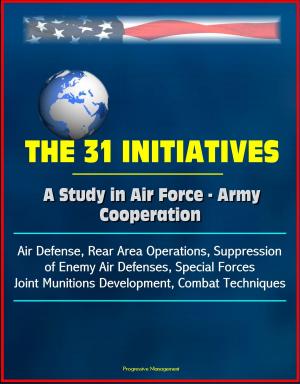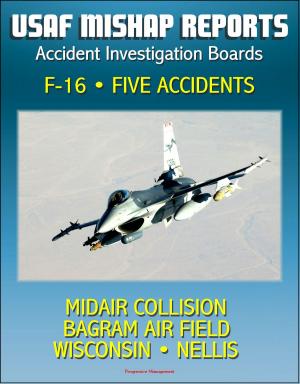Gangs and Crime in America: Mara Salvatrucha MS-13 Transnational Central American Street Gang as a Threat to National Security, El Salvadoran Refugees, Terrorism, Organized Crime, Law Enforcement Role
Nonfiction, Social & Cultural Studies, True Crime, Political Science| Author: | Progressive Management | ISBN: | 9781370296958 |
| Publisher: | Progressive Management | Publication: | April 21, 2017 |
| Imprint: | Smashwords Edition | Language: | English |
| Author: | Progressive Management |
| ISBN: | 9781370296958 |
| Publisher: | Progressive Management |
| Publication: | April 21, 2017 |
| Imprint: | Smashwords Edition |
| Language: | English |
These excellent reports have been professionally converted for accurate flowing-text e-book format reproduction. The first report deals with the potential threat to American national security from transnational street gangs, with the most widely recognized and publicized of these gangs is Mara Salvatrucha (aka MS-13).
Street gangs have been a regional problem in the United States for a long time. The Department of Justice estimates there are "approximately 30,000 gangs, with over 800,000 members, impacting 2,500 communities" in the US. Innocent people have been exposed to violence from these gangs for decades, but today's gangs seem more violent and organized than ever. Some even seem to be growing and evolving into transnational threats. These evolving groups are known as Transnational Street Gangs because of their ability to operate across national borders. Spreading throughout the United States, they are assimilating smaller gangs and bringing a culture of violence and destruction everywhere they go. Known for brutality, these groups are already threatening the stability of several countries in Central America. MS-13 first appeared on the streets of Los Angeles in the early 1980s. Started by a group of El Salvadoran refugees, the gang has spread to 42 states and grown to become one of the most violent gangs in America. One of the fastest growing gangs in the US, MS-13 has also spread to six countries in Central America and Canada. Although specific numbers vary, sources estimate there are between 10,000 and 20,000 MS-13 members in the United States and up to 250,000 in Central America. This paper will look at the international threat from MS-13 by examining the gang's history and identifying the characteristics that make MS-13 an international problem. The paper will then identify immediate and developing areas of concern and recommend how the US should mitigate the resulting threats.
The second report deals with the issue of unaccompanied alien children (UAC). After several years of increases, the number apprehended at the Southwest border by the Department of Homeland Security's (DHS's) Customs and Border Protection (CBP) peaked at 68,541 in FY2014. Some Members of Congress as well as the Obama Administration have characterized the issue as a humanitarian crisis. The reasons why they migrate to the United States are often multifaceted and difficult to measure analytically. The Congressional Research Service (CRS) has analyzed several out-migration-related factors, such as violent crime rates, economic conditions, rates of poverty, and the presence of transnational gangs. CRS also has analyzed in-migration-related factors, such as the search for economic opportunity, the desire to reunite with family members, and U.S. immigration policies.
These excellent reports have been professionally converted for accurate flowing-text e-book format reproduction. The first report deals with the potential threat to American national security from transnational street gangs, with the most widely recognized and publicized of these gangs is Mara Salvatrucha (aka MS-13).
Street gangs have been a regional problem in the United States for a long time. The Department of Justice estimates there are "approximately 30,000 gangs, with over 800,000 members, impacting 2,500 communities" in the US. Innocent people have been exposed to violence from these gangs for decades, but today's gangs seem more violent and organized than ever. Some even seem to be growing and evolving into transnational threats. These evolving groups are known as Transnational Street Gangs because of their ability to operate across national borders. Spreading throughout the United States, they are assimilating smaller gangs and bringing a culture of violence and destruction everywhere they go. Known for brutality, these groups are already threatening the stability of several countries in Central America. MS-13 first appeared on the streets of Los Angeles in the early 1980s. Started by a group of El Salvadoran refugees, the gang has spread to 42 states and grown to become one of the most violent gangs in America. One of the fastest growing gangs in the US, MS-13 has also spread to six countries in Central America and Canada. Although specific numbers vary, sources estimate there are between 10,000 and 20,000 MS-13 members in the United States and up to 250,000 in Central America. This paper will look at the international threat from MS-13 by examining the gang's history and identifying the characteristics that make MS-13 an international problem. The paper will then identify immediate and developing areas of concern and recommend how the US should mitigate the resulting threats.
The second report deals with the issue of unaccompanied alien children (UAC). After several years of increases, the number apprehended at the Southwest border by the Department of Homeland Security's (DHS's) Customs and Border Protection (CBP) peaked at 68,541 in FY2014. Some Members of Congress as well as the Obama Administration have characterized the issue as a humanitarian crisis. The reasons why they migrate to the United States are often multifaceted and difficult to measure analytically. The Congressional Research Service (CRS) has analyzed several out-migration-related factors, such as violent crime rates, economic conditions, rates of poverty, and the presence of transnational gangs. CRS also has analyzed in-migration-related factors, such as the search for economic opportunity, the desire to reunite with family members, and U.S. immigration policies.















